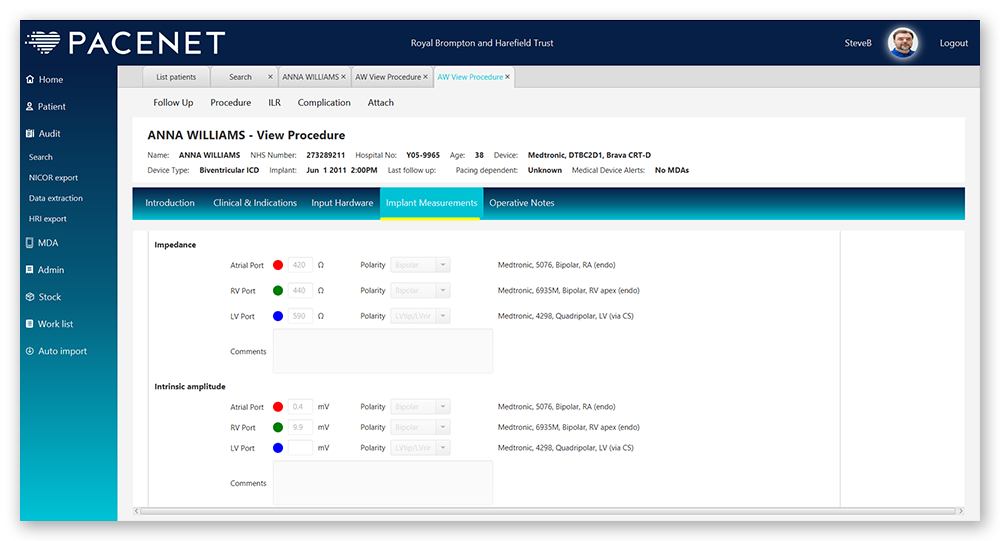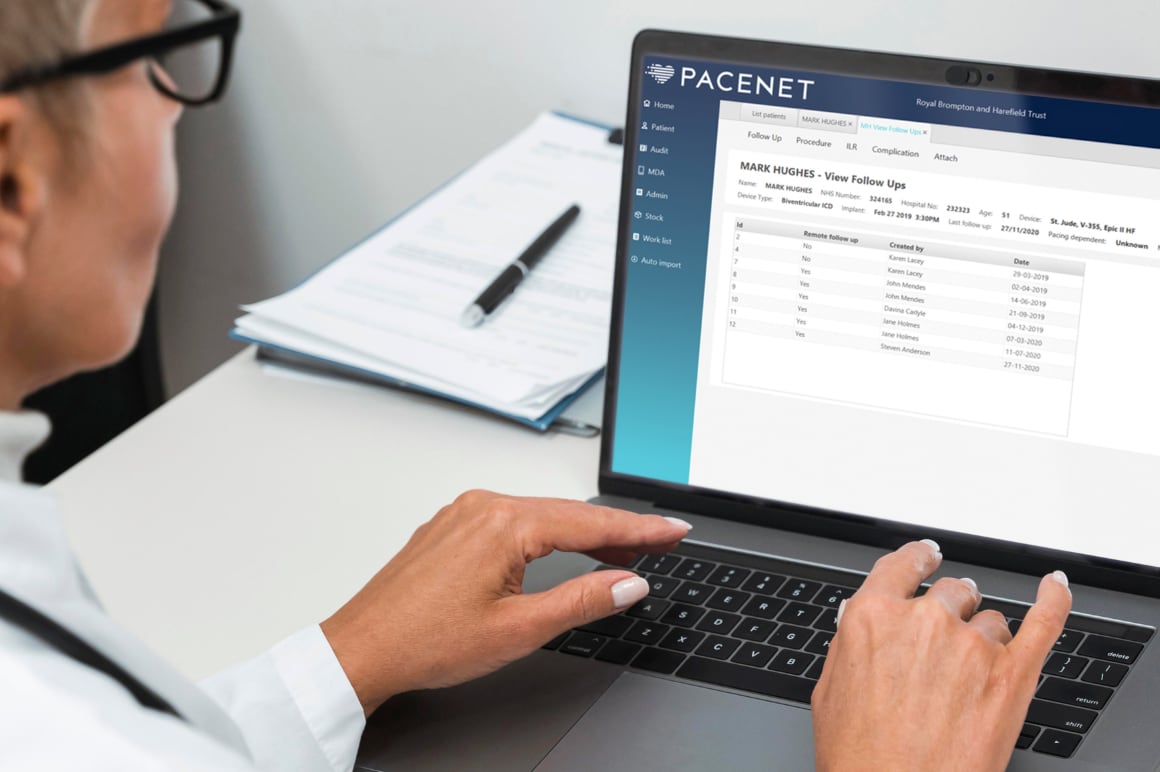

Clinical risk mitigation
A hospital’s pacing service is a complex clinical environment, comprising clinical procedures, implanted hardware, and follow-ups, occurring in a particularly vulnerable patient group.
Clinical risk is present at all stages, creating a difficult governance challenge.
The PACENET database is designed specifically to minimise and mitigate the clinical risks found in this area of a hospital’s work.
![]()
“Before PACENET, we didn’t know how many patients were missed with MDAs”
Franklin Daniel-Balan, Senior Chief Cardiac Physiologist

Procedures
Pacing procedures are complex. The hardware implanted needs to be tracked for its lifetime. Around half of procedures are performed in patients with hardware already implanted, which will be modified. Patients are often pacing dependent. Infection risks from repeat procedures are high. Pre-planning and availability of clinical records is critical.

Implanted hardware
In addition, Medical Device Alerts (MDAs) issued by the MHRA and hardware manufacturers present a major administrative challenge. Hardware implanted in – or explanted from – patients under follow up, or transferred out of the hospital, needs to be identified. Sequences of actions need to be completed in every affected patient, which can create an open-ended governance duty.
![]()
“Without PACENET, MDAs would be extremely difficult to search for all patients”
Franklin Daniel-Balan, Senior Chief Cardiac Physiologist


Follow-ups
In the pacing clinic, run by physiologists, thousands of clinical data points are reviewed, including data potentially pointing to hardware failure, occurrence of arrhythmias, and development of heart failure. This throws up complex governance questions related to how and where data are stored, completeness, accuracy, medical review of diagnostic data, and demonstration of audit process.
![]()
Within the PACENET system, you can filter data by approximately 100 parameters, to derive lists of patients or procedures, which can be exported from the system.
See our case studies for examples of how PACENET reduces risk